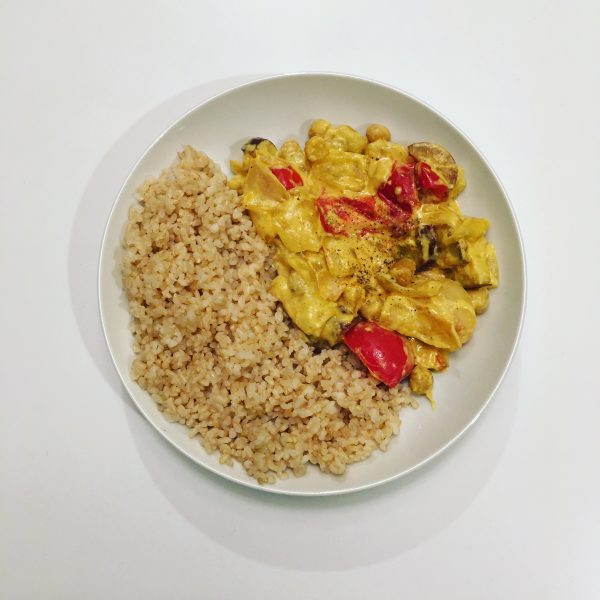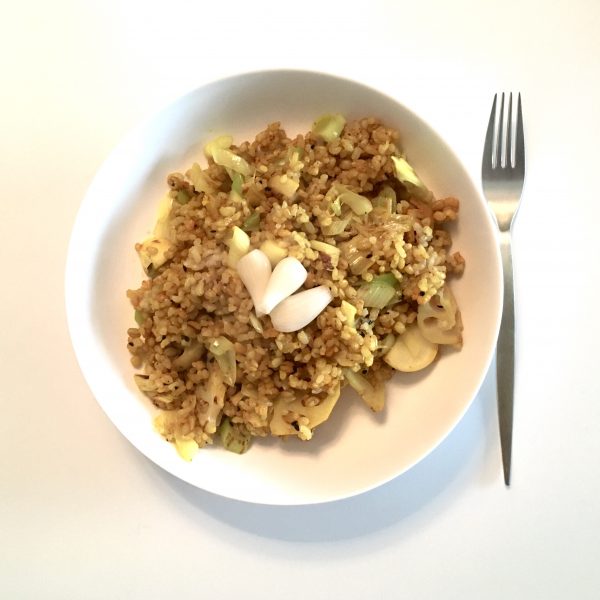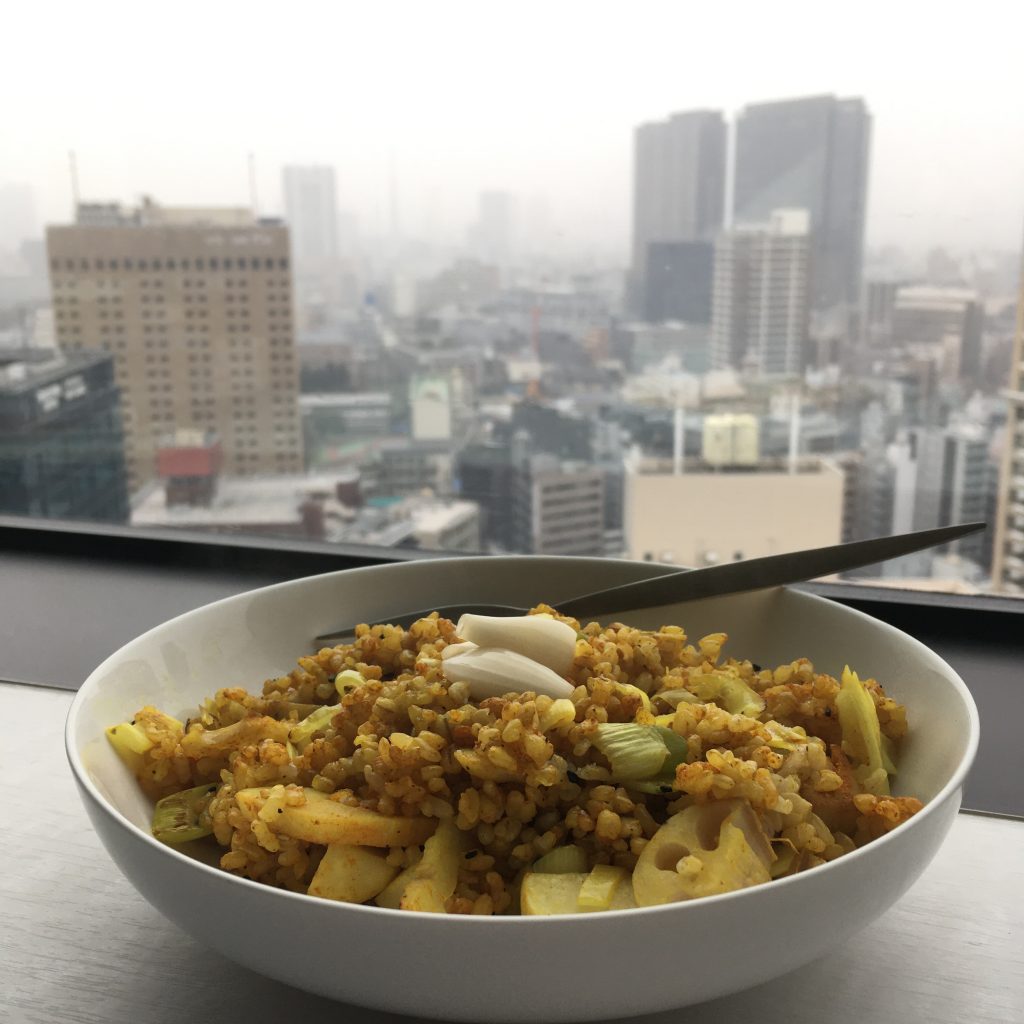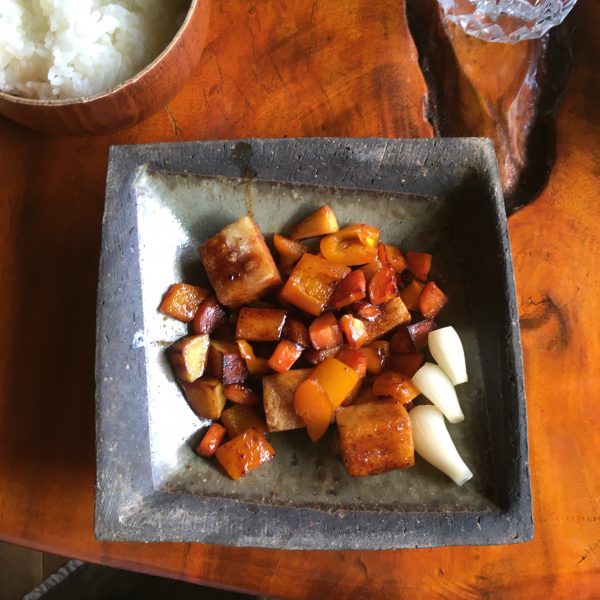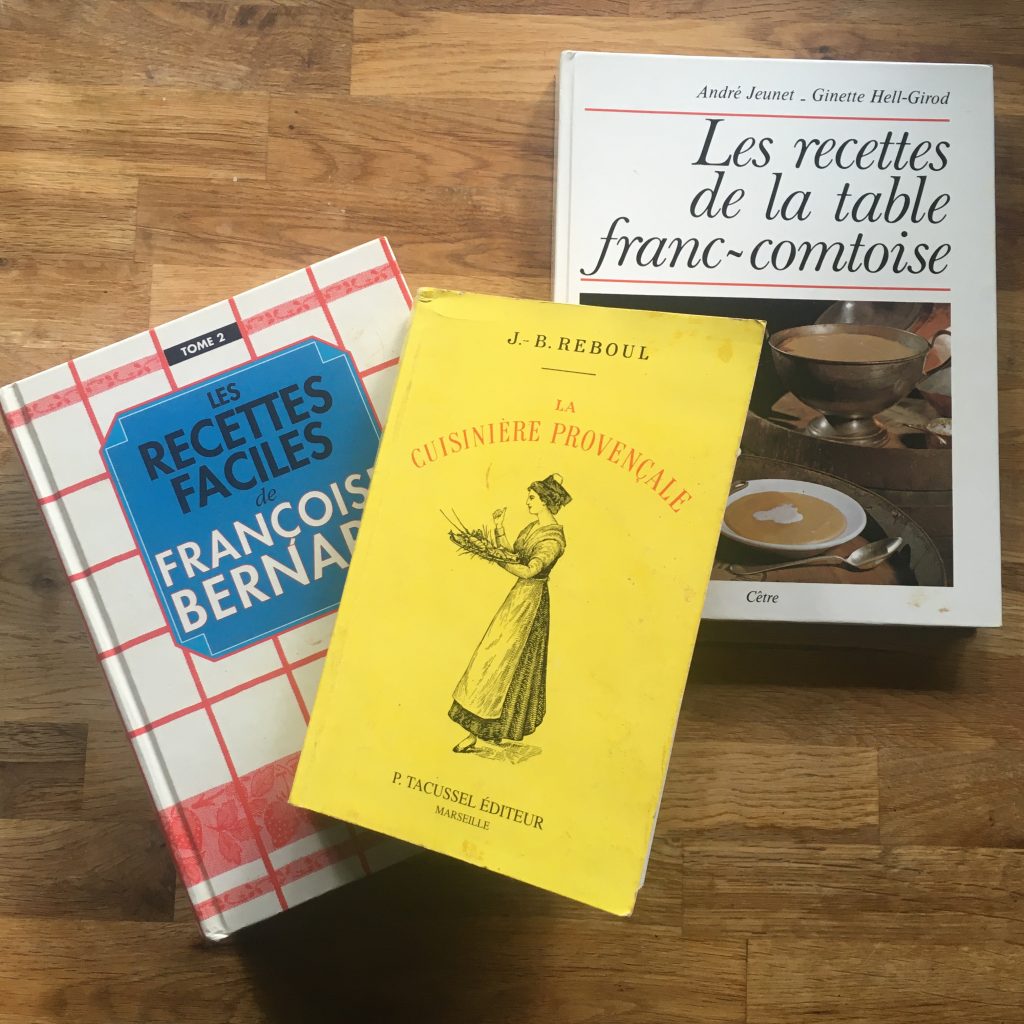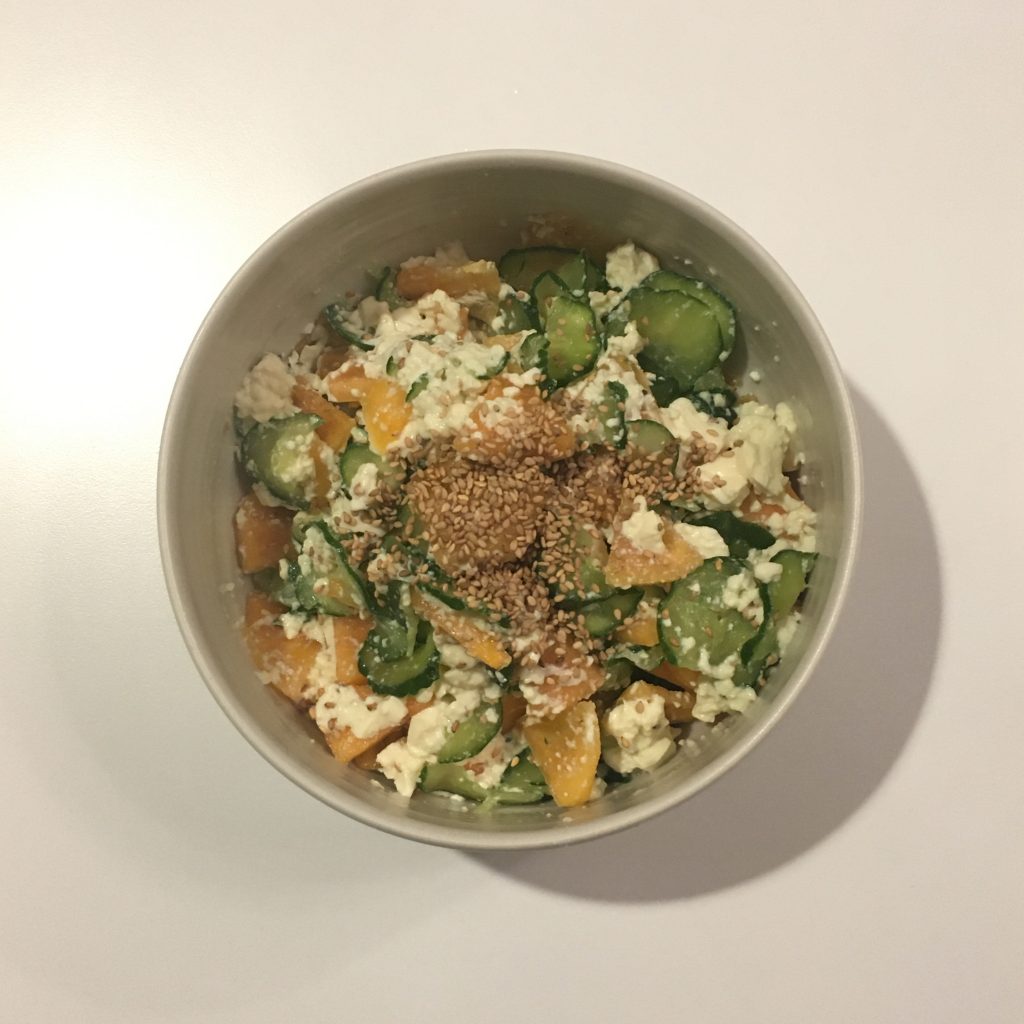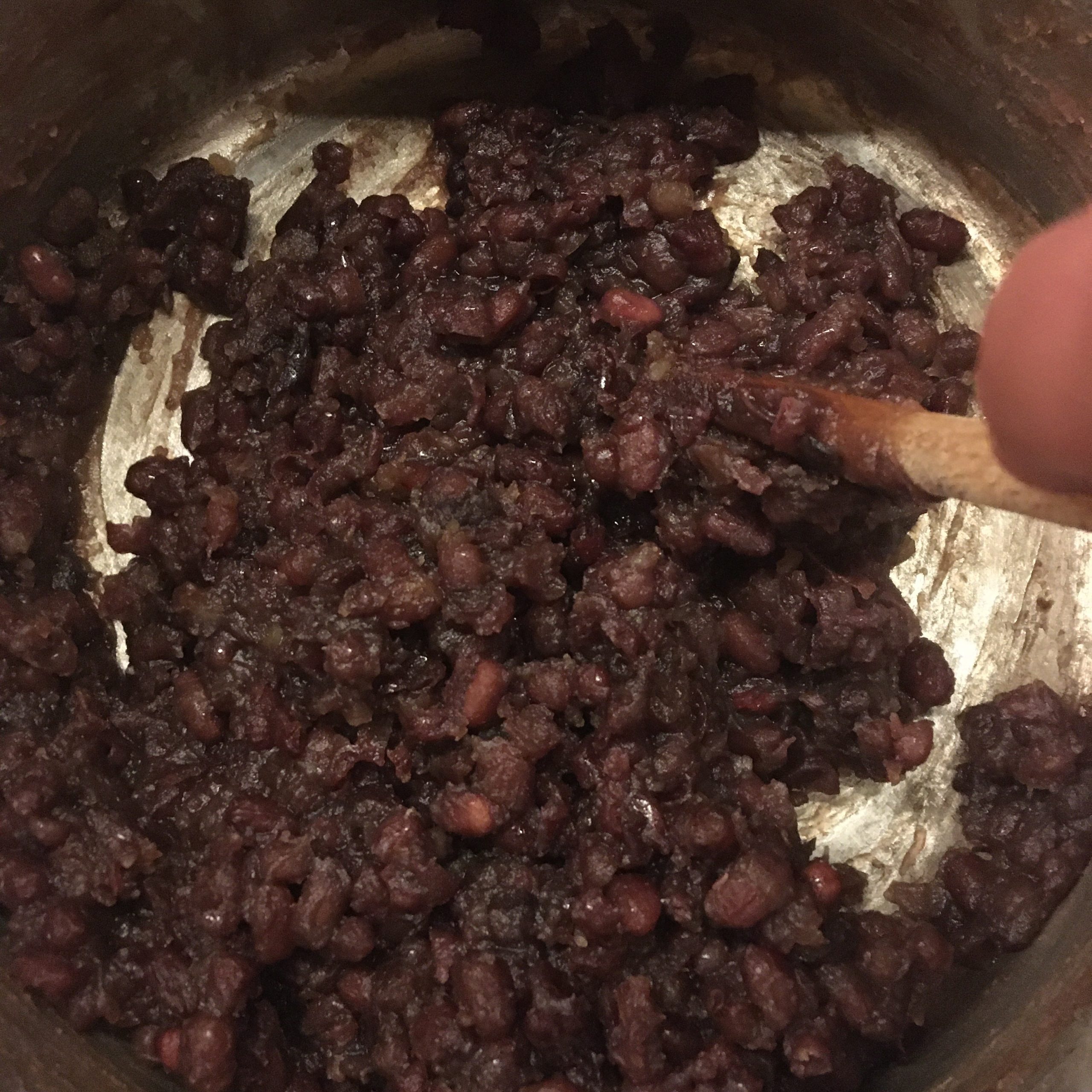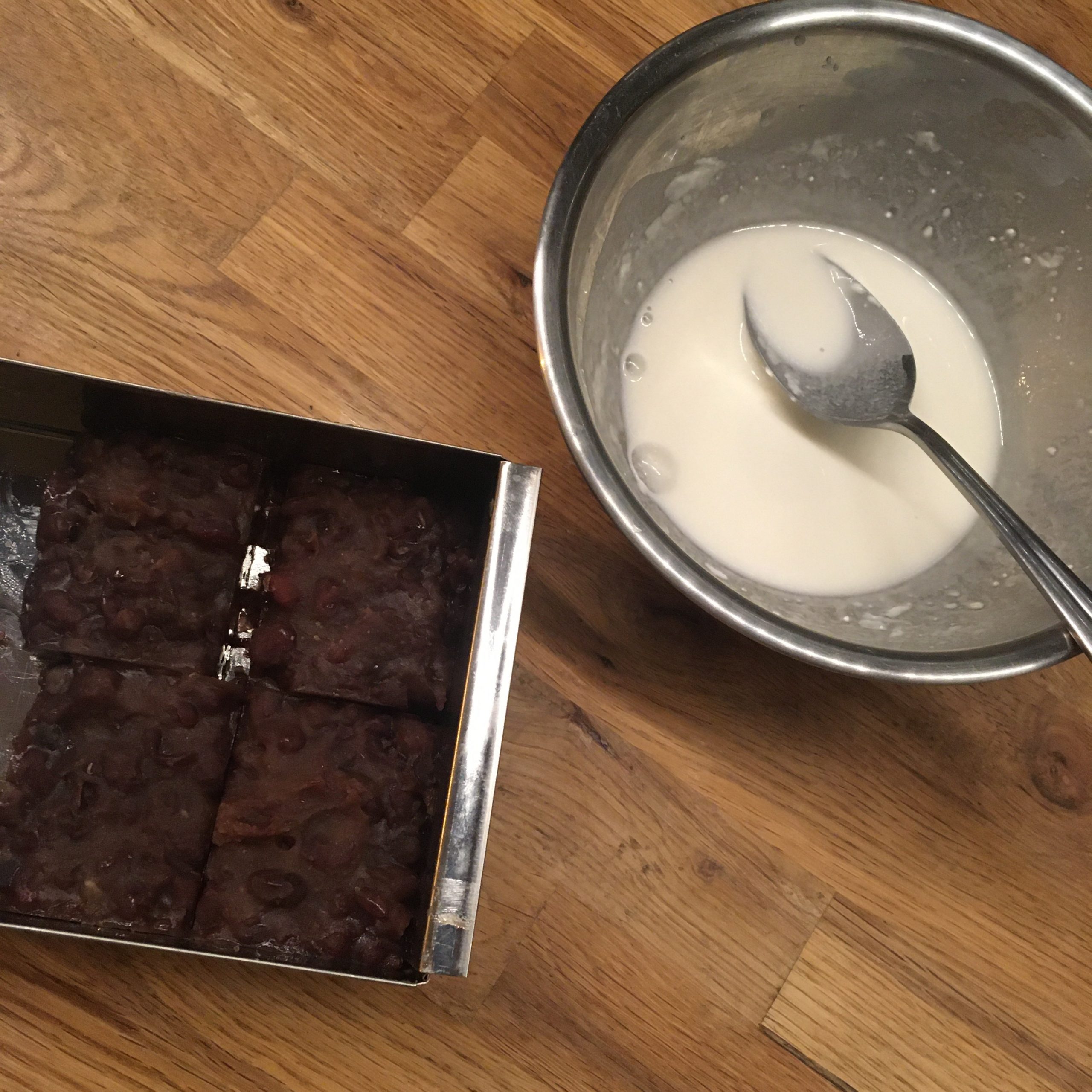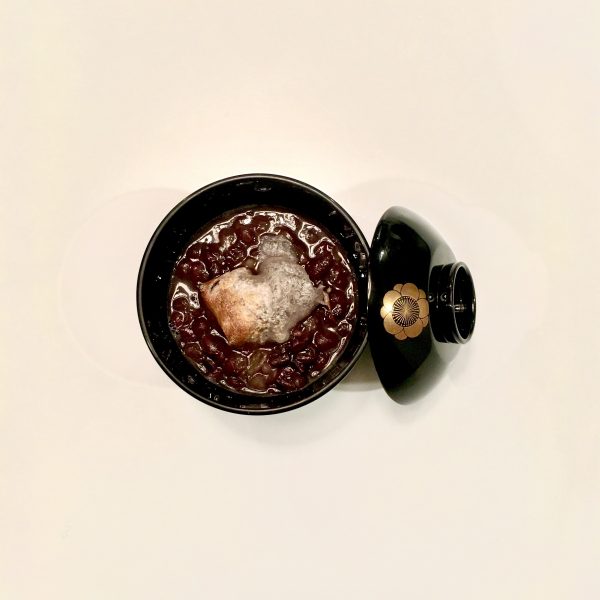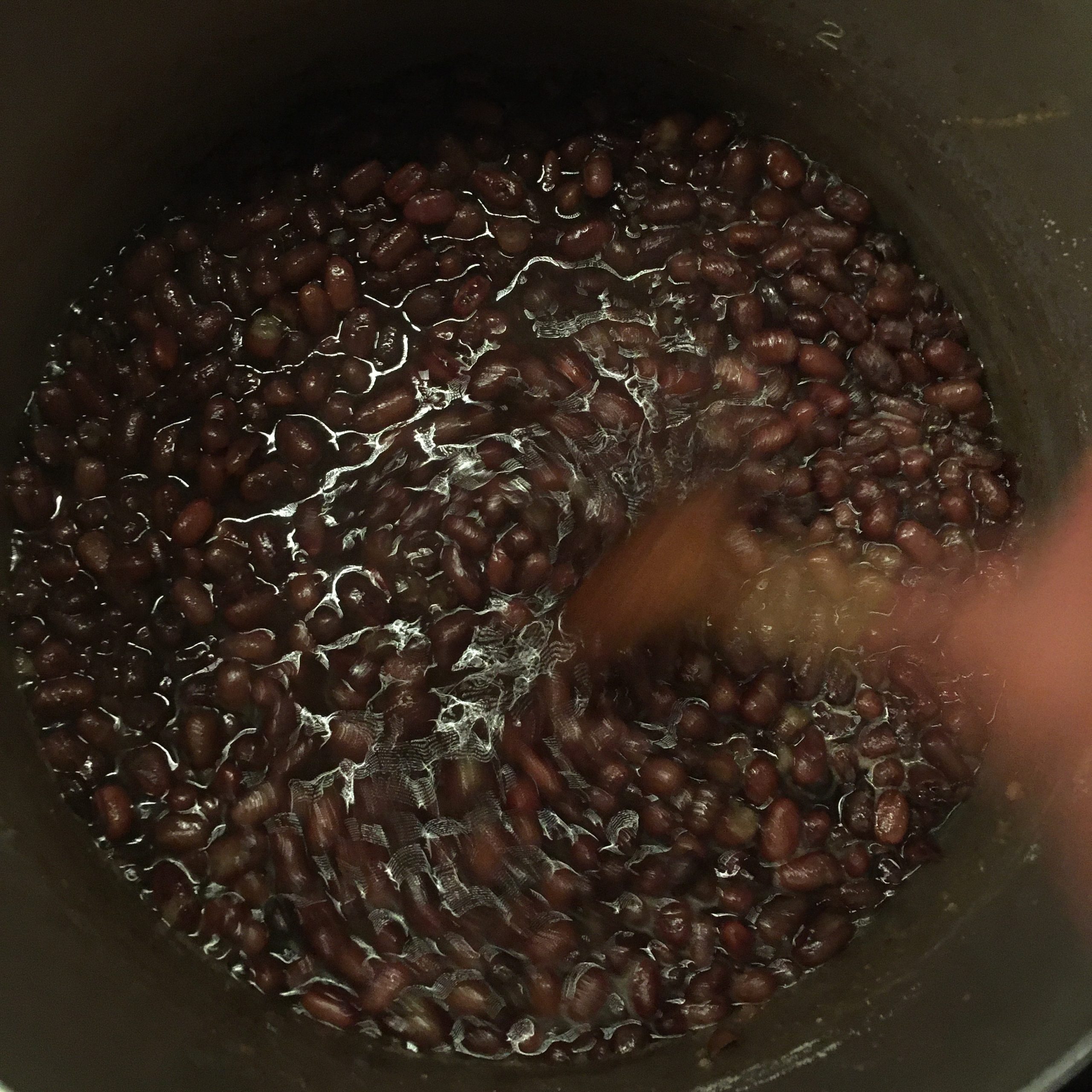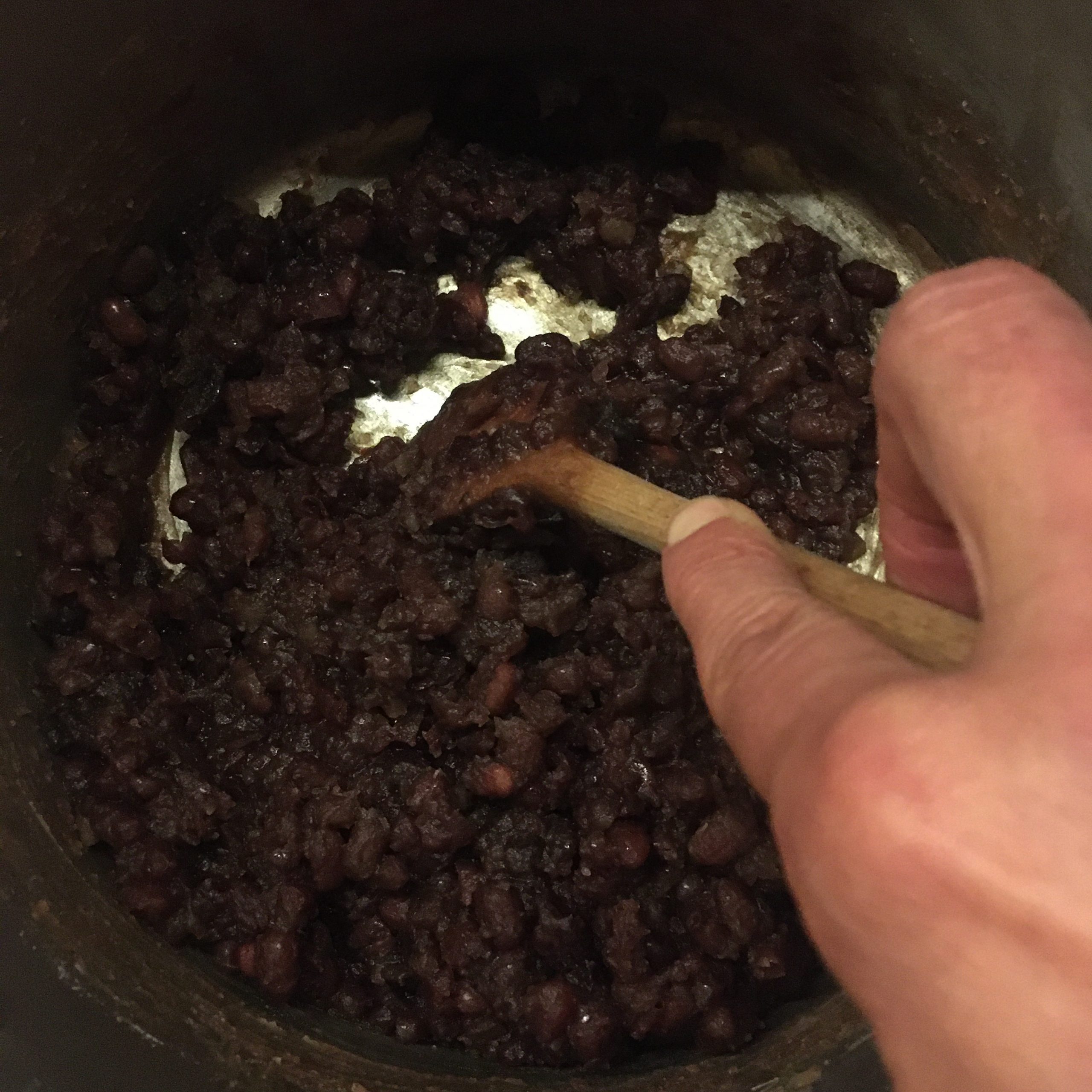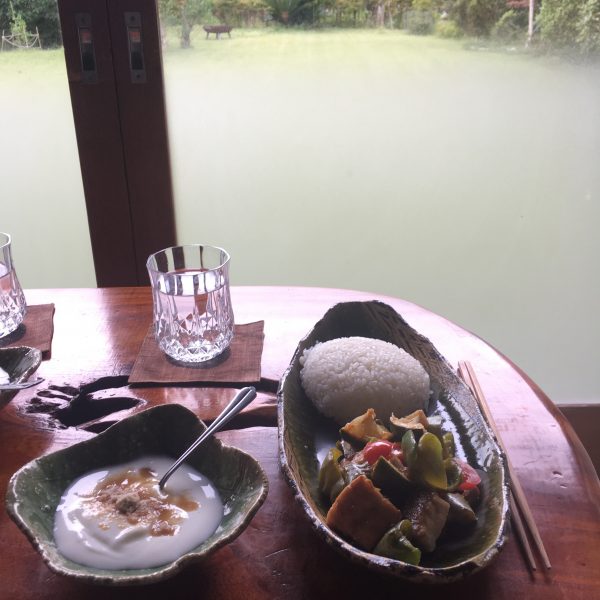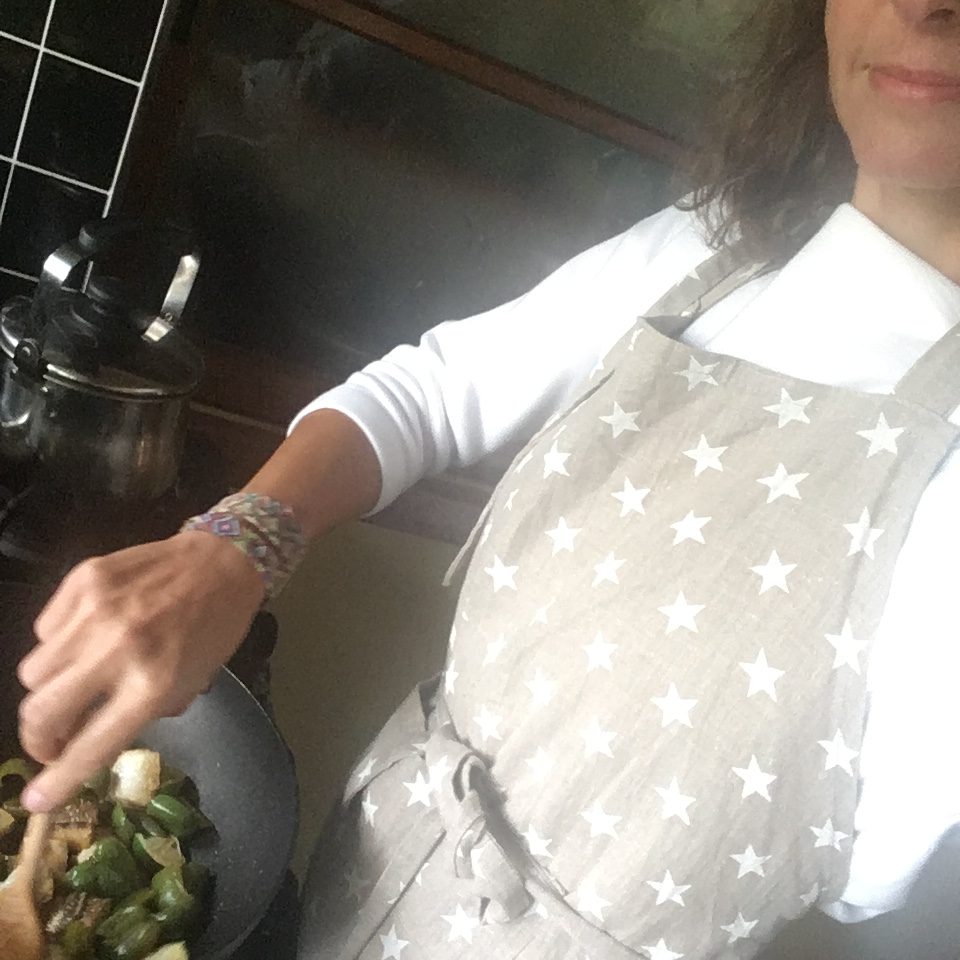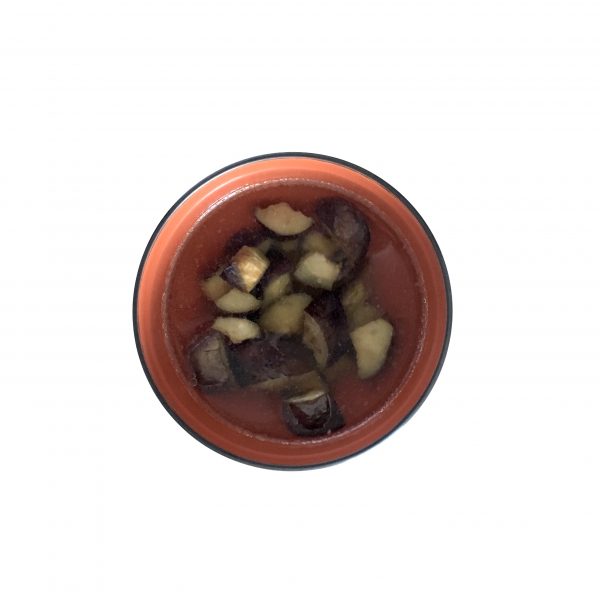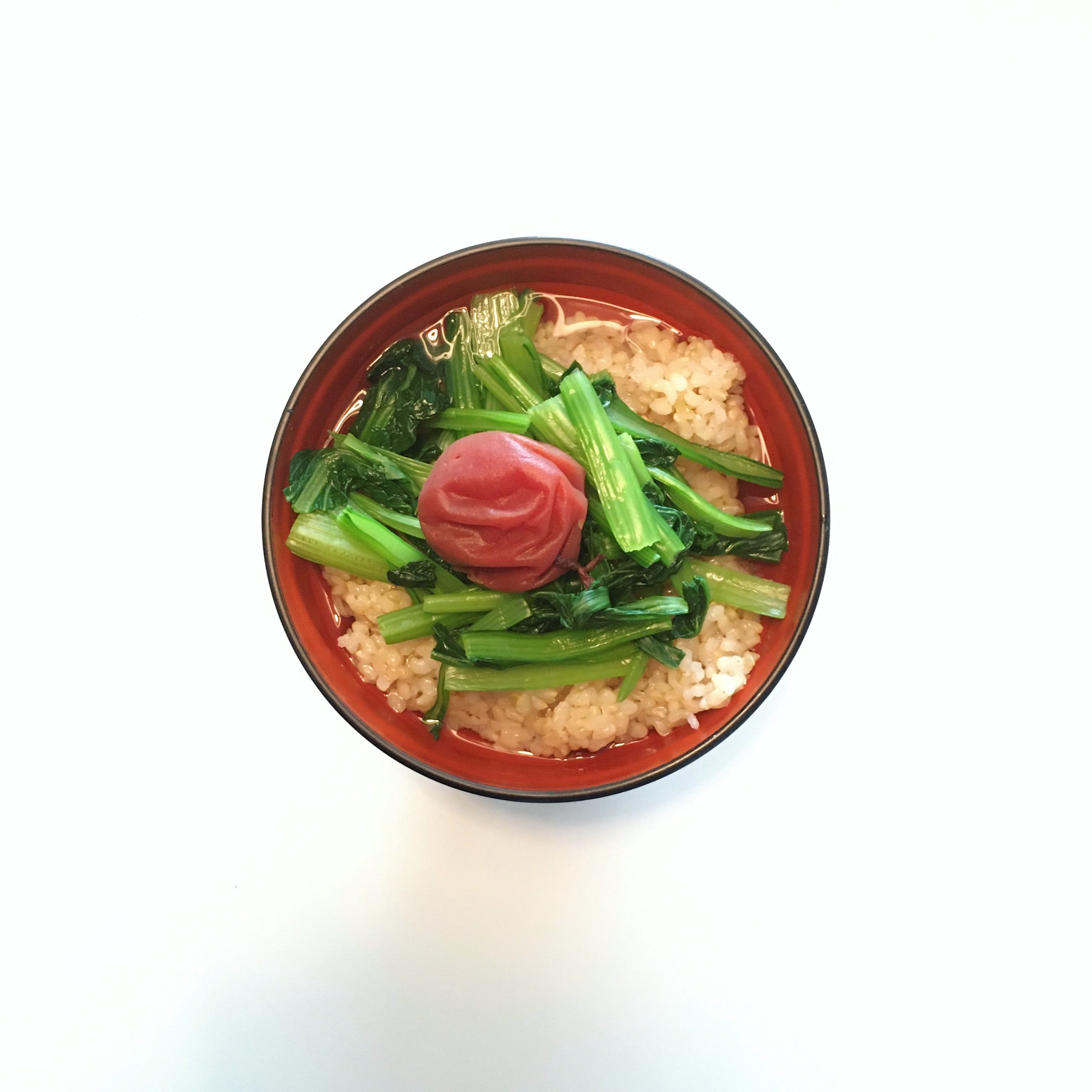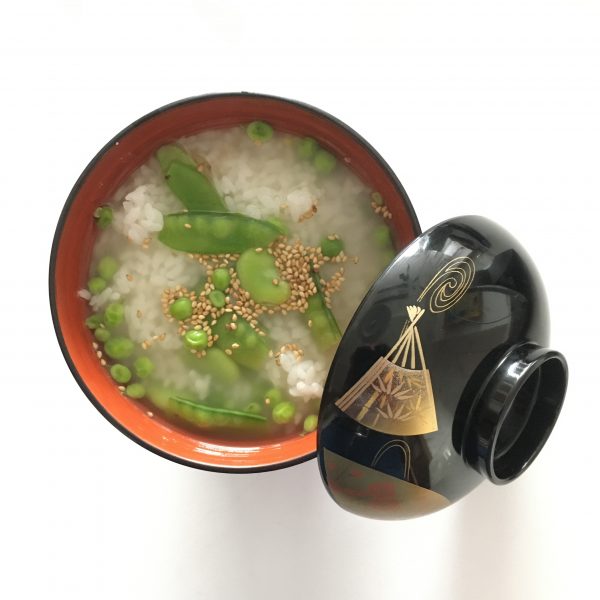Since we’ve been working from home, I cook three to four meals a day (we wouldn’t miss a good tea time!) and a whole new routine of recipes slowly replaced old habits. More meals to cook = more chances to explore. I cook more quiche as we spend more time in Ohara, I also cook more steam buns and gyoza, also one dish that has been an almost weekly thing is brown rice and spicy vegetables. As much I love Japanese brown rice, it takes too much time to cook it after coming back from work and have it ready for dinner (about 2 to 3h) so I would almost never make any. Working from home as this perk that starting a recipe is really simple, squeezed between two meetings.
For some reason Thursday is the day we most often have brown rice. And one thing I really love is to have it with some seasonal vegetables and a light spicy sauce. Versions are endless. And with the spring coming and the new vegetables I prepared a very simple and ultra full of flavors version. A few chick peas remaining from the hummus I made the other day, a bit of coconut cream, and a lot of new and fresh onions that our friends gave us. Add some super ripe tomatoes and, because winter is still not completely gone, a sweet potato, you have a great base. Normally I would have added curry to the mixture, but curry powder is on my shopping list and I didn’t have time to go grocery shopping this week. And actually it was good that way. It forced me to explore other spice combination and I realize that curry is not necessary. So if you want a very mild and very tasty recipe for your new onions and your brown rice, just read below and enjoy!
New onions with spice and coconut milk
- 2-3 new onions
- 1 sweet potato (one carrot could do, nothing could do too)
- 1 large and ripe tomato (if you can’t find one just do without)
- 200ml of coconut cream or coconut milk
- 1 cup of chick peas, boiled and drained
- 1tsp of ground cardamom
- 1tsp of turmeric
- 1/2tsp of all spice
- 1/2tsp of ground cumin
- 1/2tsp of salt
- ground black pepper
Remove one layer of onion skin and cut them in 8. Wash and cut the vegetables in bite size.
In a greased pan, on medium heat, put all the vegetables, and the chick peas, and cook for 10min while stirring regularly.
Add the coconut cream, the spices and stir well. Cook under cover for 5min. And that’s ready. Serve with brown rice, but I bet it is also a killer with flat breads or basmati rice.
